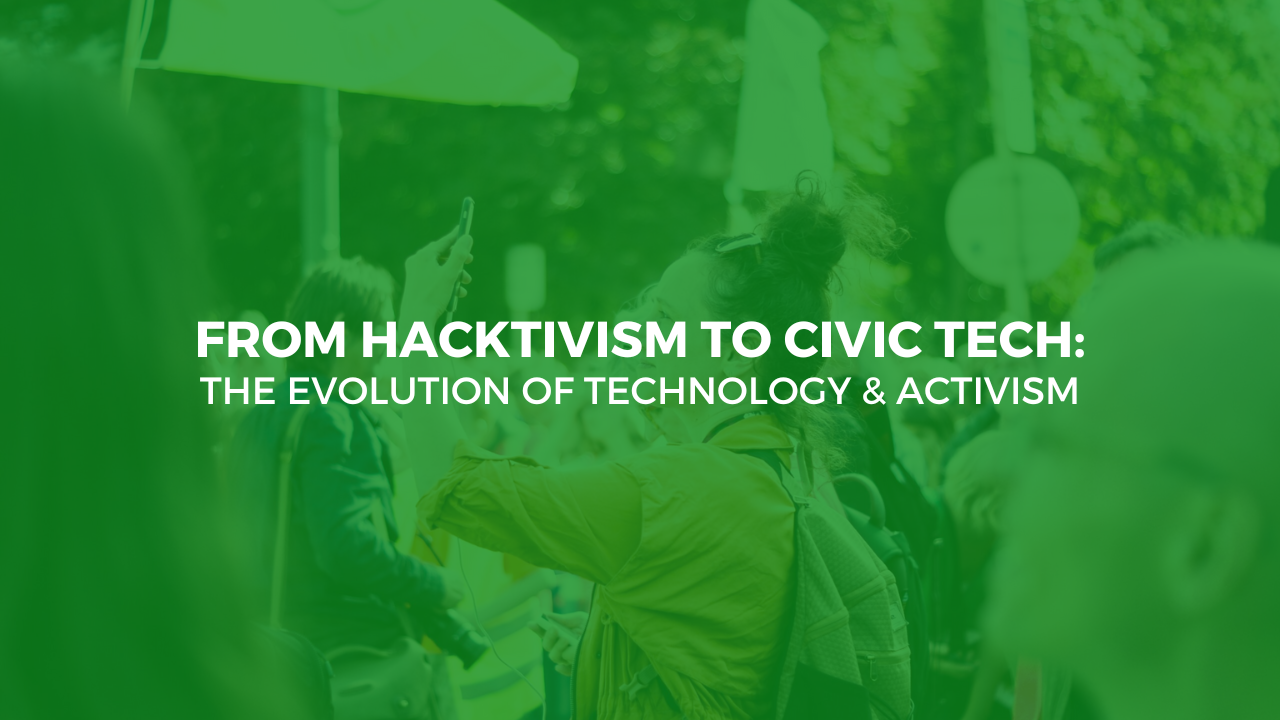The relationship between technology and activism has always been, in my opinion, a story of collaboration and conflict happening simultaneously. On one hand, technology proved to be a powerful tool for activists (and I witnessed this firsthand through my work with civil society organizations), allowing them to reach larger audiences, amplify their voices, and coordinate their efforts more efficiently than ever before. However, on the flip side, the same technology has also been weaponized to censor, and put pressure on activists, which is a reality in many countries across the world.
(Note: Arabic Translation of this blog post is available on my Substack here.)
(الترجمة العربية متوفرة في هذا الرابط أعلاه بالأزرق)
A Brief History: When Technology Met Activism
In the early 1990s, the term “hacktivism” emerged to describe the use of hacking techniques in pursuit of social or political goals. What made hacktivism different from traditional hacking was its higher purpose: it was activism through disruption, aiming to expose injustice, hold powerful entities accountable, and support freedom of speech. Early hacktivist groups like Anonymous and Electronic Disturbance Theater operated under pseudonyms, taking on governmental and corporate targets to reveal corruption and advocate for social change.
While hacktivism was marked by its subversive, sometimes confrontational approach, technology-driven activism evolved into a more structured form with the rise of civic tech in the 2000s, and this shift opened new possibilities for how citizens could engage with governance and democracy.
Understanding Civic Tech: A Different Path to Change
Civic technology, often called civic tech, involves creating and using technology to promote civic engagement, transparency, and accountability in governance. Instead of relying on disruptive tactics, civic tech uses innovative tools to solve social challenges and engage citizens in meaningful ways. One of the early pioneers in this space, the Sunlight Foundation (launched in 2006), harnessed technology to make governments more open and accountable, and this set the foundation for what civic tech could achieve.
In contrast to hacktivism’s often adversarial stance, civic tech represents a collaborative approach to reform. Platforms like Datawrapper for data visualization, and Ushahidi for crisis mapping, offer concrete ways for citizens to actively participate in democratic processes and shape the policies that affect their lives.
Key Differences Between Hacktivism and Civic Tech
While both hacktivism and civic tech leverage technology to drive social change, their approaches and goals differ significantly:
Hacktivism often uses disruptive techniques to draw attention to social issues, taking a direct, sometimes confrontational stance against perceived injustices and power structures. Civic Tech, on the other hand, focuses on creating tools and platforms that enable public engagement, allowing citizens to participate in shaping policies and holding leaders accountable through constructive means.
How Civic Tech is Empowering Citizens Today
In recent years, civic tech has gained significant traction worldwide (including in Morocco and the MENA region where I’ve been working), becoming a powerful tool for addressing complex social issues. During the COVID-19 pandemic, for instance, a time when I was launching AmanRaqmy.org, civic tech solutions like the COVID Tracking Project and various contact-tracing apps provided critical information to governments and the public, helping inform health policies and save lives.
Challenges Facing Civic Technology
As promising as civic tech is, and I’ve seen its potential firsthand, it faces several significant challenges that we need to address:
Accessibility: Civic tech tools must be designed to be accessible to people with various levels of tech literacy and resources. From my experience working directly and indirectly with over +2000 CSOs and activists across the MENA region, I learned that ensuring broad access is crucial for truly inclusive engagement, and this remains one of the biggest barriers to civic tech adoption.
Preventing Co-optation: Civic tech should remain free from influence by powerful entities, such as governments or corporations, which may attempt to exploit these tools for their own purposes rather than for genuine citizen empowerment.
Privacy and Security: Safeguarding user data and privacy is critical (this is something I’m particularly passionate about given my background in Cybersecurity), as many civic tech platforms handle sensitive information about activists, journalists, and vulnerable communities.
These challenges remind me that real impact in civic tech requires not just innovative tools, but also continuous advocacy, capacity-building, and a commitment to putting communities first, values that have guided my work since I started volunteering back in 2008.
FAQs
1. What is hacktivism?
Hacktivism refers to using innovative technological, and or hacking techniques and approaches for political or social activism. Hacktivists often work anonymously to expose corruption, fight for social justice, or champion free speech.
2. How does civic tech differ from hacktivism?
While hacktivism uses disruptive hacking approaches or techniques to achieve its goals, civic technology focuses on developing technology that fosters civic engagement, transparency, and government accountability.
3. What are some examples of civic tech?
Notable examples of civic tech include platforms like Ushahidi for digital mapping and Datawrapper for data visualization.
4. What challenges does civic technology face?
Some key challenges include ensuring accessibility for all citizens, preventing the co-optation of these tools by powerful entities, and safeguarding users’ privacy.
5. How can civic tech promote transparency?
Civic technology platforms can make government data more accessible, allowing citizens to hold their leaders accountable and engage more actively in the democratic process.
